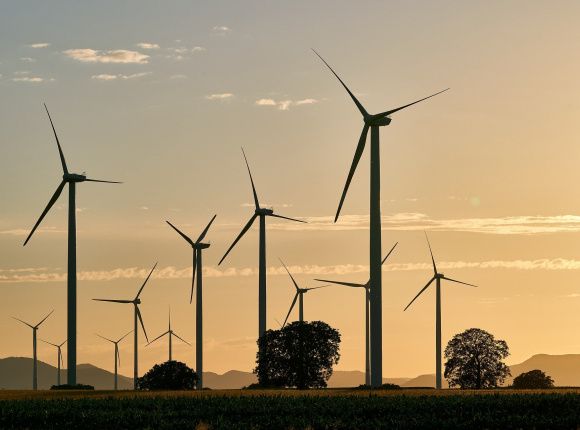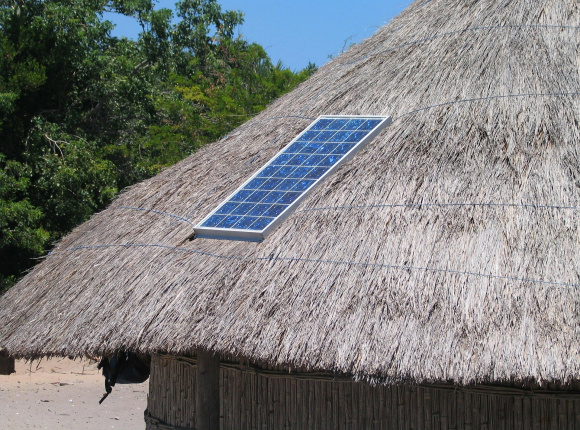Key takeaways:
- Step-wise approach to offtake can significantly de-risk a project
- Revenue stacking will unlock better financial terms
- Coordination between equity, debt, and grant providers in combination with milestone structures will encourage innovative green hydrogen project development
Green hydrogen is a versatile energy carrier that can play a significant role in decarbonising the world’s energy system and reaching the goals set by the Paris agreement. Anchored in many corporate and governmental strategies, hydrogen is expected to contribute roughly 6% of total emissions reductions required to reach net zero global emissions by 2050[I]. Green hydrogen is produced through electrolysis of water with renewable electricity. Currently the global capacity for green hydrogen production is limited, though multi-billion dollar projects are being announced regularly, including last month’s $3bn MOU in Egypt[II] by EDF and AMEA Power and the $9.4bn development in Namibia won by HYPHEN – both steps towards the roughly USD500bn of global announced investment up to 2030[III].

However, to align the hydrogen sector with the 2050 goals over USD1.2 trillion in investment will be needed[IV].
The announcement that the Dutch government will extend its SDE++ subsidy to green hydrogen production in the upcoming round[V], and the World Hydrogen Summit that took place in May inspired REM Capital’s International Finance and M&A team to examine what characterises a successful green hydrogen project, and crucially, how these projects reach bankability in order to materialise the massive investment needs in order to achieve the Paris agreement.
Green hydrogen project types
Different sectors and industries can benefit from using green hydrogen as shown below. Because of this, there are several different types of green hydrogen projects. The overarching principle in the use of green hydrogen is ‘Power to X’ i.e. converting electricity to hydrogen for use in mobility, industry, heating, co-injection, reconversion to power, or other uses.

Many of the recently announced projects are being developed around Hydrogen’s potential in international trade, leveraging the high renewable generation potential in specific geographies such as Chile and South Africa. Currently however, the offtake market for hydrogen is largely limited to existing industrial uses in oil refining and fertilizer production, while the cheaper steam-methane reforming of natural gas (‘blue’ hydrogen) remains the main method of production.
To reach the ambitious but necessary goals of the European Commission’s hydrogen strategy[VI] of 2x40GW electrolysis capacity by 2030, projects of all types will need to be commercially viable. To achieve this, innovative project structures will be needed. The question becomes, how can innovative projects ensure robust commercial conditions during the financing process, and how can investors be sure they are supporting the right projects?
What does the industry say?
To understand the key factors affecting bankability from a practitioner's perspective, we spoke to Daniel Gerner from GP Joule, a renewables developer that is involved in the landmark eFarm project.
Developed by GP JOULE with the backing of the Federal Ministry of Transport, the eFarm project is Germany’s largest green hydrogen mobility project. Green hydrogen is produced locally with over 1MW of wind generation and is available for residents and companies to use as fuel. Currently two local buses and several vehicles use the hydrogen produced, with trucking planned as the next offtake market.
The eFarm project is unique in that it has commenced operations (Dec ‘20): green hydrogen is currently being produced by five 225kW electrolysers near between Husum and the Danish border in North Friesland, with up to 450 tons of CO2 emissions reduction being realised annually[VII]. Despite having commenced operations, the project faced several challenges along the way which were successfully overcome by the project development team.
- Offtake
The eFarm project has taken a step-wise approach to offtake, starting with the acquisition of two hydrogen fuel cell buses for use in local public transport. With the buses now fully operational thanks to strong local support, preparations have been made to scale up to the refuelling of hydrogen fuelled trucks in the next 1-2 years. - Financing
The eFarm project was initiated in 2016, which was a very different time for green hydrogen and renewable energy projects. The project was able to receive state subsidies for over 50% of the CAPEX of the project thanks to local government support, however the developers commented that the subsidy regime was very difficult and time-consuming to navigate, making it hard to determine the most suitable subsidies for the project. Besides making use of state subsidies, the project also takes an innovative approach to the use of wind-turbines which are close to the end of their FiT: including older existing turbines extends turbine’s lifespan and reduces the CAPEX for the renewable generation. - Modularity
The project has an important role as a pilot facility but also as a long-term part of the regional energy transition strategy. With a modular approach to offtake (buses first, then heavy goods vehicles) the project is able to move forward with the regional mobility sector, producing more green hydrogen through additional electrolysers when the time is right.
Key determinants of bankability
What emerges when further examining the breadth of green hydrogen projects currently being developed is that there is no single model for reaching commercial feasibility. Unlike the LNG industry where the primary use was clearly the transport of natural gas, many green hydrogen projects have more varied intended uses, and thus offtake markets. In most cases a single offtake agreement will not be sufficient and project financers will be exposed to more than one market component.
At this stage with no global green hydrogen market, securing a fixed revenue stream is critical, at least for the tenor of debt in the project. For this reason, currently the largest announced final investment decisions are integrated projects that tap in-to existing hydrogen use i.e. refining and fertilizer production such as the Yara and Linde Group fertilizer plant in Norway and the Iberdrola Fertiberia plant in Spain. However, in order to support innovation and stimulate new uses for green hydrogen such as in mobility or heating, it is important for projects to be able to secure commercial financing for new offtake markets such as mobility or power. In the eFarm project strong local government support was key to unlocking the state support needed, which in turn provided commercial investors such as GLS bank, VR Bank Westküste, and Nord-Ostsee Sparkasse with the necessary security. The same approach was successful in Norway for Yara and Linde Group. Leveraging equity and non-recourse debt finance in combination with subsidies and grants provides the most encouraging environment for green hydrogen project development, and milestone structures could be used by investors to stimulate further expansion.
Taking a modular approach to electrolyser and renewable generation capacity allows project developers to compartmentalize risk, with upside potential available down the line. Besides a modular approach to plant sizing, ‘stacking’ a combination of different revenue streams, such as replacing an existing flow of ‘grey’ hydrogen with green hydrogen and using surplus green hydrogen in a new offtake sector significantly reduces offtake risk. This is key to attracting commercial investment, and is shown in the Taranaki project in New Zealand which initially replaces grey hydrogen in fertilizer production whilst building a market for hydrogen use in local transportation. Even then, for projects with new offtake markets it is essential for public financing to provide instruments to de-risk projects and spur innovation and the wider adoption of green hydrogen in new markets. The newly announced subsidy for green hydrogen production in The Netherlands is a step in the right direction for further adoption of green hydrogen production which we hope will inspire other public bodies to do the same. At this stage in the lifecycle of green hydrogen, a coordinated effort between DFIs, governments, and other public bodies is required to achieve project bankability and to provide the catalyst for the next phase of private sector-led growth in the industry.
REM CAPITAL, part of the Hypoport group, is a financial advisory boutique with a wealth of experience in the renewable energy and cleantech sectors, including hydrogen. Through our creative approach to commercial structuring, we help your projects reach financial close. Please do not hesitate to get in touch with one of our experts listed below.
Casper Sikkema – c.sikkema@remcapital.de
David Milne – d.milne@remcapital.de
Svea Weithoff – s.weithoff@remcapital.de
- [I] https://www.iea.org/fuels-and-technologies/hydrogen
- [II] https://www.afrik21.africa/en/egypt-edf-and-amea-power-to-produce-and-export-green-hydrogen-at-ain-soukhna/
- [III] https://hydrogencouncil.com/wp-content/uploads/2021/07/Hydrogen-Insights-July-2021-Executive-summary.pdf
- [IV] https://www.iea.org/reports/global-hydrogen-review-2021/executive-summary
- [V] https://cleanenergynews.ihsmarkit.com/research-analysis/dutch-governments-14-billion-scheme-expands-hydrogen-subsidies.html
- [VI] https://ec.europa.eu/energy/sites/ener/files/hydrogen_strategy.pdf
- [VII] Based on 2 H2 busses each 150.000 km/a and 40 PKW each 12.000 km/a.


